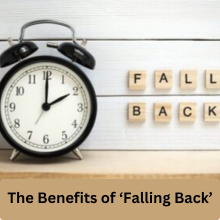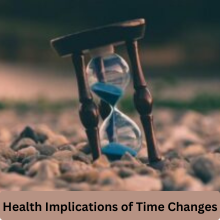
As the leaves change and the days get shorter, it’s that time of year again when we prepare to “fall back” for Daylight Saving Time. This year, on Sunday at 2 a.m. local time, we will set our clocks back one hour, giving us a glorious extra hour of sleep. However, this shift also brings some challenges as we transition into the darker months ahead. Let’s dive into what this means for us and our bodies.
Understanding Daylight Saving Time
What is Daylight Saving Time?
Daylight saving time (DST) is the practice of moving clocks forward one hour during the warmer months to increase evening daylight hours. It typically starts in the spring and ends in the fall, giving us the chance to enjoy more sunshine in the evenings.
Why Do We Change the Clocks?
The original idea behind DST was to make better use of daylight during the longer days of summer. This practice was first proposed by Benjamin Franklin in 1784 and later implemented more widely during World War I to conserve energy. Today, it remains a topic of debate among experts, with various pros and cons.
The Benefits of ‘Falling Back’
Extra Hour of Sleep
One of the best things about “falling back” is the extra hour of sleep we gain. Who doesn’t appreciate that? It’s like a mini-vacation for our bodies, allowing us to recharge and start the winter months feeling refreshed.
Aligning with Natural Light
By shifting back to standard time, we align our schedules more closely with natural light. This can help regulate our internal clocks, making it easier for many to rise and sleep at appropriate times.
The Downsides of Standard Time
Shorter Days Ahead
While gaining an hour of sleep sounds great, it also means shorter daylight hours in the afternoon. By the time we leave work or school, it can feel like we’re stepping into a dark tunnel. This sudden change can take a toll on our mood and overall well-being.
Impact on Mental Health
For those prone to Seasonal Affective Disorder (SAD), the transition can be especially tough. The lack of natural sunlight can trigger feelings of sadness and lethargy, making it important to find ways to combat these effects.
Health Implications of Time Changes
How Time Changes Affect Your Body
When we change the clocks, our bodies often struggle to adjust. Our circadian rhythms, which govern sleep-wake cycles, can become disrupted. Even a one-hour shift can throw off our sleep patterns, leading to grogginess and irritability.
Sleep Disruption and Its Consequences
Studies have shown that the week following the time change can see an uptick in health issues, including heart attacks and strokes. Lack of sleep can exacerbate these risks, as it is linked to a host of other problems, including obesity and cognitive decline.
Preparing for the Time Change
Tips for Adjusting Sleep Schedules
To make the transition smoother, try adjusting your sleep schedule in the days leading up to the time change. Go to sleep and wake up 15 minutes earlier each day. This gradual shift can help your body acclimate more easily.
Importance of Morning Light
Expose yourself to plenty of morning light. This helps reset your internal clock, signaling to your body that it’s time to be awake. Aim for at least 30 minutes of natural light soon after waking up to boost your mood and energy.
Also read: Discover the Best Skins in Fortnite’s Remix Chapter 2
State Variations in Time Changes
States That Don’t Observe Daylight Saving Time
Interestingly, not all states participate in Daylight Saving Time. Arizona and Hawaii have opted out, sticking with standard time year-round. This choice helps them avoid the seasonal disruptions and health risks associated with time changes.
The Debate Over Time Changes
There’s ongoing debate about whether to abolish DST altogether. Some argue that the biannual clock changes are harmful to health and productivity. Proposals have been made to keep standard time permanent, aligning our clocks more closely with nature.
Conclusion: Embracing the Time Change
As we prepare to fall back this Sunday, it’s essential to recognize both the benefits and challenges that come with this transition. Embrace the extra hour of sleep but also take steps to mitigate the downsides of shorter daylight hours. Finding ways to incorporate more natural light into your day and adjusting your sleep schedule can help make this change smoother.
Also read: Vote Smart: A Simple Guide to the 2024 Election Process
FAQs
What time should I set my clock back?
Before you go to bed on Saturday night, turn your clock back one hour.This means if you usually go to bed at 10 p.m., set your clock to 9 p.m.
Will I really get more sleep?
Yes! When the clocks go back you get to sleep in an extra hour. Enjoy it!
How long does it take to adjust to the time change?
It can take a few days for your body to fully adjust. Gradual changes to your sleep schedule can help.
Are there health risks associated with Daylight Saving Time?
Yes, research shows an increase in heart attacks and strokes following the spring time change. The fall change is generally easier, but it can still disrupt sleep.
Why do some states not participate in Daylight Saving Time?
States like Arizona and Hawaii have chosen not to participate to avoid the health and lifestyle disruptions that come with changing the clocks.
With this understanding, you’re better prepared to face the upcoming time change and make the most of your days ahead!

